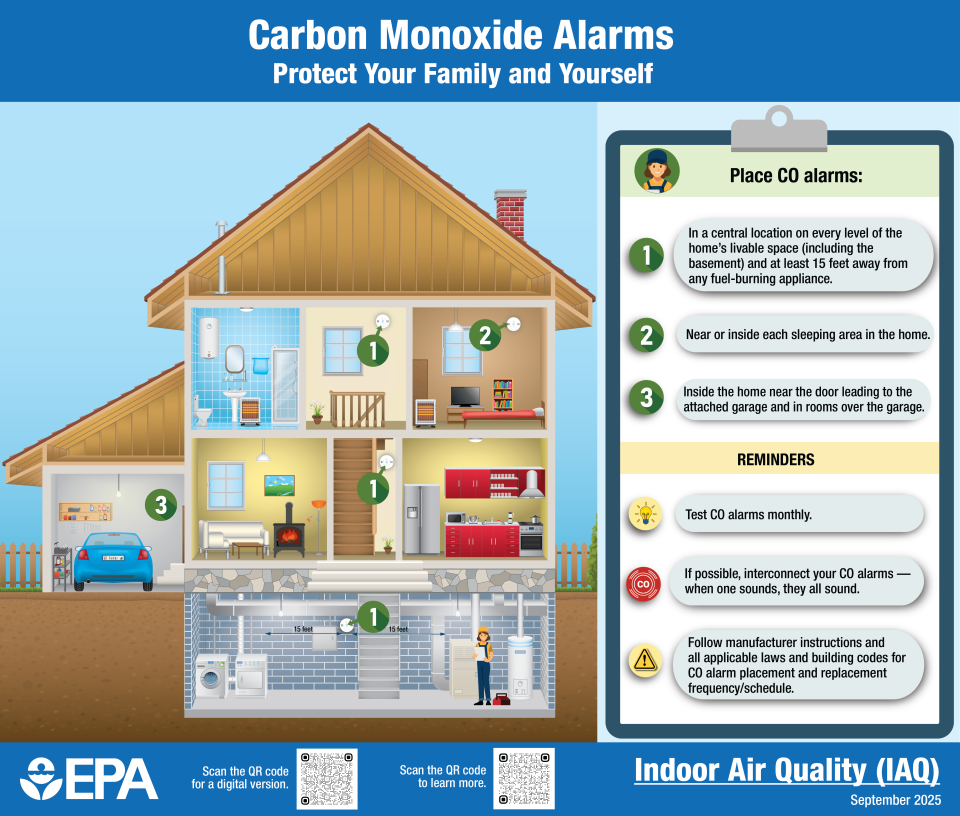Carbon Monoxide Alarms: Protect Your Family and Yourself Infographic
This infographic depicts a visual representation of where to place carbon monoxide alarms inside a home and advises on maintenance of the alarm and following manufacturer instructions along with any local building codes.
- Download the infographic: Carbon Monoxide Alarms: Protect Your Family and Yourself Infographic (pdf)
Text Version: Carbon Monoxide Alarms: Protect Your Family and Yourself Infographic
Carbon Monoxide Alarms: Protect Your Family and Yourself Infographic
Place CO Alarms:
- In a central location on every level of the home’s livable space (including the basement) and at least 15 feet away from
any fuel-burning appliance. - Near or inside each sleeping area in the home.
- Inside the home near the door leading to the attached garage and in rooms over the garage.
Reminders:
- Test CO alarms monthly.
- If possible, interconnect your CO alarms — when one sounds, they all sound.
- Follow manufacturer instructions and all applicable laws and building codes for CO alarm placement and replacement frequency/schedule.

